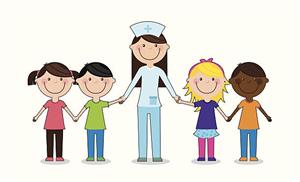- Pine Brook School
- Lice Information
Pliszak, Charisse
Page Navigation
-

Head Lice Newsletter
A message from the School Nurse.........
An estimated 6 to 12 million infestations of head lice occur each year in the United States, most commonly among children ages 3 to 11. Each year, about one out of every 100 elementary school students will become infested with head lice. Lice affect every social and economic class and is not a reflection of an individual’s personal hygiene or household cleanliness. In fact, lice often infests people with good hygiene and grooming habits.
What are head lice?
Head lice are tiny, wingless insects that live close to the human scalp. Lice move by crawling; they can not hop or fly. They feed only on human blood. They can lay eggs, called nits. The nits hatch and cause itching and discomfort but do not spread disease. Lice spread easily. They do not infest dogs, cats and other pets.
What do lice look like?
There are several forms: nits, baby lice and adult lice. Nits are tiny eggs that attach to the hair shaft close to the scalp. They are yellow or white and resemble dandruff. Dandruff can be flicked from the hair easily whereas nits are attached to the hair with a cement and are not easily removed. Nits are commonly found near the nape of the neck or the ears. Nymphs, or baby lice are small and grow to adult size in one to two weeks. Adult lice are the size of a sesame seed and are tan to gray-white.
How do you get head lice?
Head lice are spread by direct contact with the hair of an infested person. Anyone who comes in head-to-head contact with someone who has head lice is at greatest risk. Examples include: playing at school, sports activities or camp.
Can sharing personal items or clothing spread lice?
Although uncommon, head lice can be spread by sharing clothing such as hats, scarves, coats, sports uniforms or other items such as combs, brushes, or towels used by an infested person. Contact with a bed, couch, pillow or carpet that has recently been in contact with an infested person may also spread lice. Head lice cannot survive for very long off the head.
What are the signs and symptoms of head lice infestation?
- Tickling- feeling of something moving in the hair
- Itching- caused by an allergic reaction to the bites of the head louse. The most common symptom of head lice.
- Irritability and difficulty sleeping, lice are most active in the dark.
- Sores on the head caused by scratching. The sores can become infected with bacteria found on the individual’s skin.
How do you know if your child has head lice?
If you find a live nymph or adult louse on the scalp, it is a good indication of an infestation. Lice are most commonly found behind the ears and near the neckline at the base of the head. They move quickly and avoid light, making them hard to see. Misdiagnosis is common. If you are unsure if your child has head lice, it is advisable to contact your pediatrician if you suspect an infestation.
If your child has lice, what treatment options are available?
There are several treatments available. Discuss the best option for your family with your pediatrician or healthcare professional.
Does your entire family need to be treated for head lice?
All household members and close contacts that may have recently stayed in your home should be checked for head lice. If anyone shows signs of active infestation they should also be checked and treated if necessary.
Preventative measures:
- Students with long hair should put their hair in a pony tail, braid, bun or pulled back with a clip.
- Combs and brushes should be left at home.
- Coats should be kept in a student’s backpack.
- Encourage your child to keep from rubbing up against another child’s head while playing.
- Encourage your child not to share hair accessories, hats, scarves, coats, combs, brushes, towels, etc.
- Check your child's hair daily.
References
https://www.cdc.gov/lice/about/head-lice.html

